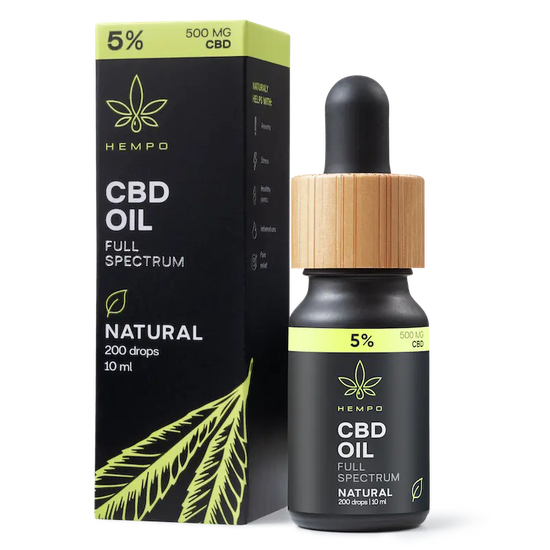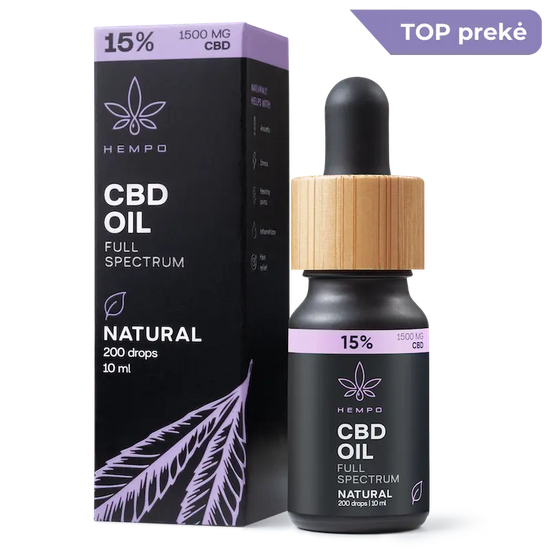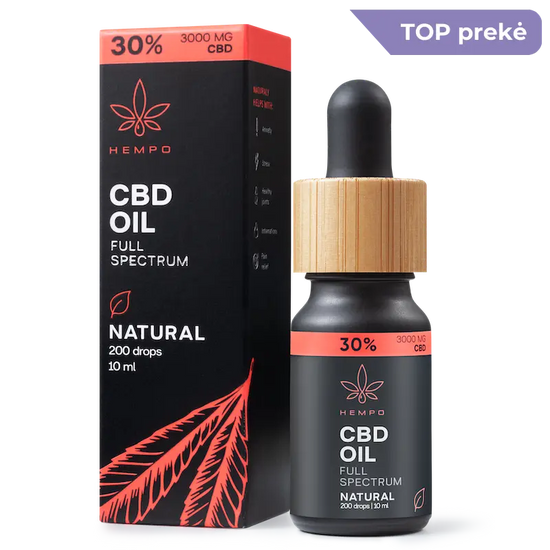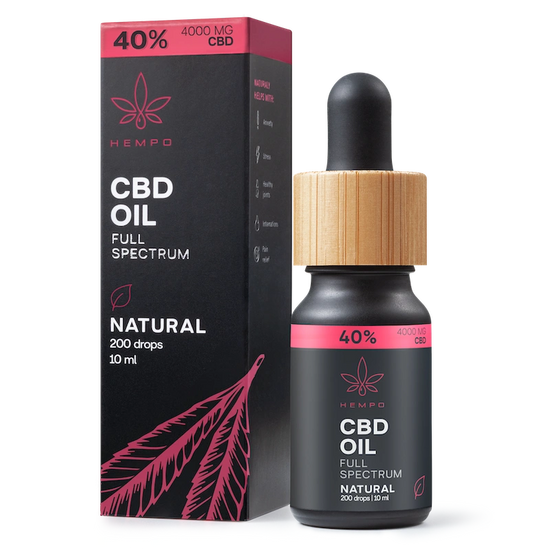CBD and terpenes: what they are and how they impact the effect of CBD
If you have never heard of terpenes or you don't know what their function is and how it impacts the effect of CBD oil, you are in the right place. Terpenes are molecules that we all encounter in our daily lives. You can find them in many different plants, including flowers, fruits, vegetables and herbs. Hemp plants are especially rich in terpenes.
Additional terpenes are often added to CBD products because it has been scientifically proven that they have the ability to increase the effectiveness and benefits of CBD based on the entourage effect, which you will learn more about in this article.
But why add terpenes to CBD oil at all? And why do some CBD brands emphasise their importance? Is it really a valuable ingredient or just another way to increase the price of CBD products?
Read on to find out the answers to all these questions.
Table of Contents
Note: This and other articles on Hempo's blog are for informational purposes only. According to the directive of the European Commission, cannabidiol is classified as a 'novel food', therefore CBD products should not be used as a food supplement in Lithuania.
What are terpenes?
Terpenes are compounds found in plants that determine their aroma and taste. You can smell terpenes every time you smell a flower, a fresh fruit or vegetable - we are practically surrounded by terpenes all the time.
There are several hundred different terpenes in the world, and more than 100 are found in hemp plants. However, only a few terpenes in industrial hemp are concentrated enough to be considered significant. As we mentioned earlier, some CBD brands add additional terpenes to their CBD oil to support the terpene levels naturally found in the flowers of the hemp plant. Yes, but why? The reason is simple: terpenes, like the related cannabinoids (CBC, CBN, CBG, THC, etc.), cause the so-called entourage effect, which enhances the effectiveness of CBD. But we will talk about it at the end of the article.
Scientists have been studying the properties of terpenes for some time now and have come to the conclusion that certain terpenes may have many therapeutic properties. It should also be noted that terpenes, due to their holistic, natural effect, are an integral part of aromatherapy, helping you to relax and calm down during the session.

The most common terpenes found in CBD oil and their characteristics
-
Limonene
You can guess from the name where this terpene can be found. Limonene is usually found in the zest of citrus fruits. It smells like lime, orange and lemon, but this terpene doesn't just have a fresh aroma. Limonene has antifungal properties and may improve mood, reduce inflammation and curb anxiety. When limonene is added to CBD oil, you can feel the effects of this terpene on your well-being and it can enhance the absorption rate of other terpenes.
-
Myrcene
Myrcene is another common terpene. It has a spicy, earthy and herbal aroma, just like hemp flowers. Although it is the smallest terpene in molecular size, it can have a strong relaxing effect on the body, causing a feeling of drowsiness. As for the health benefits of myrcene, it also includes antibacterial and pain-relieving properties.
-
Pinene
Pinene can be found in pine needles and several citrus fruits. It has been mentioned in traditional Chinese medicine due to its therapeutic qualities. It can be used as an anti-inflammatory, antibacterial and bronchodilator active ingredient.
-
Linalool
Linalool is another terpene common in hemp. This molecule produces a delicate and subtle flower aroma. It is abundant in lavender and chamomile. Some CBD brands infuse their products with linalool to achieve a wonderful smell. It also enhances the effectiveness of the CBD product in terms of anxiety relief and other calming properties, such as the ability to fall asleep more easily. You can read more about the calming properties of CBD oil in the article ' CBD hemp oil and emotional health'.
-
Caryophyllene
Caryophyllene is one of the most promising terpenes, naturally found in cloves, cinnamon and black pepper. It gives certain strains of hemp a spicy, woody aroma. The most intriguing trait of this terpene is the ability to interact with the endocannabinoid system (CB1 and CB2 receptors) in a similar way to cannabinoids. On top of that, it can produce analgesic and anti-inflammatory effects.
-
Humulene
Humulene is another terpene common in hemp. It can act as an appetite suppressant and has anti-inflammatory properties. Its aroma is full of hops, which are humulene-rich. Coriander, cloves and basil are other humulene-rich plants.
-
Terpinolene
Terpinolene can give hemp a smoky or woody aroma. It is also found in sage and rosemary. This terpene is well-known for its antioxidant, antibacterial and mildly sedating properties. Scientists have found that terpinolene is responsible for depressing the central nervous system. Simply put, it makes you less anxious and helps you relax.

What are Botanical Terpenes?
Are terpenes and terpenoids the same?
When reading about terpenes, you might come across the term 'terpenoids'.
Are terpenes and terpenoids the same? And if not, how are they different?
Terpenes and terpenoids are slightly different in their molecular structure. You can say that terpenes are a new version of terpenoids. What you smell when you smell a fresh hemp plant is the terpene aroma released by the glands of the hemp flower. Terpenoids form when the hemp flower is dried. Basically, these two circumstances (fresh or dried plant) determine the transformation of the molecule.
Terpenoids are often used in industry for their aromatic properties. Producers of various products incorporate terpenoids as an ingredient in spices, perfumes and essential oils. However, a growing body of research suggests that terpenes and terpenoids play an important role in boosting the effects of cannabinoids. [ Studies]
Recent studies show that terpenes can alter, increase (positively) or decrease (negatively) the properties, duration and intensity of the CBD extract of the respective hemp species. In other words, the effect of CBD products that do not contain terpenes will be less effective and the health benefits will be much lower.
How to Determine if a CBD Product Contains Terpenes
Why add terpenes to CBD oil?
As you understood from the previous paragraph, terpenes have a positive impact on the effectiveness of CBD products and provide them with additional attributes (sedative effects, anti-inflammatory properties, neuroprotective effects, etc.). Not only can they improve the experience of CBD oil users, but they can also enhance the effects of the main cannabinoids. An ever-increasing number of people believe that full-spectrum CBD oil with terpenes is much more beneficial than a product based on CBD distillates or isolate (terpenes-free). Read the article ' Types of CBD oil and their differences'.
For example, adding additional terpenes such as linalool and myrcene to a CBD product will give the product more relaxing, calming properties. On the other hand, terpenes such as limonene and caryophyllene can increase alertness, concentration and energy levels.
Another reason to add terpenes to CBD oil is the entourage effect, which we'll talk about in a bit more detail in the next section.

CBD oil, terpenes and the entourage effect
The entourage effect was first discovered in 1998 by Israeli scientist Rafael Mechoulam. This concept was further popularized in 2011 by another prominent scientist, Ethan Russo, who published a detailed report in the British Journal of Pharmacology detailing the entourage effect. [ Article]
Simply put, the entourage effect refers to the effect where the cannabinoids (CBD, CBG, CBN, CBC, etc.), terpenes and flavonoids in hemp work in synergy to enhance each other's effects. For example, limonene helps the body absorb other terpenes more efficiently, and caryophyllene directly interacts with cannabinoid receptors, activating their molecular absorption and effectiveness.
That's why different strains of the hemp plant provide different effects. It depends not only on the amount of cannabinoids in their composition - although it also plays an important role - but also on the terpenes and their unique properties. It's another reason why many CBD users prefer full-spectrum CBD over CBD isolate.
Key findings about terpenes: why choose CBD oil with terpenes
As you can see, terpenes are a very effective component of CBD oil, which can significantly enhance the effectiveness of these products and give them an additional effect. That's why that some CBD brands add terpenes to their CBD oil. Terpenes can have a positive impact on the effects of CBD products as well as complement and enhance the effects of the main cannabinoids and trace minerals.
Hempo CBD oil is extracted using the supercritical CO2 extraction method, the most advanced and efficient way to extract CBD. CO2 extraction is a non-invasive method that does not use solvents or extremely high temperatures, so all the beneficial cannabinoids, terpenes and phenols are present during the extraction process of CBD extract.
Before buying CBD products, check if they contain terpenes and choose full-spectrum CBD oils extracted without invasive methods. Only then will you be assured of the maximum effectiveness of CBD oil and the desired effect when using CBD extract.





